An In-Depth Review of the Sony FE 16-35 f4 OSS Wide Angle Lens
Содержание
Sony FE 16-35mm F2.8 GM Introduction
The Sony FE 16-35mm F2.8 GM is a new premium wide-angle zoom lens for the Sony full-frame FE-mount cameras (A9/A7/A7R II/A7S). It has five aspherical elements, two of which are Sony’s XA (extreme aspherical) elements that reduce aberration and deliver ultimate resolution, and two ED (extra-low dispersion) elements. The lens is dust- and moisture-resistant and has a minimum focusing distance of 28cm with a maximum magnification of 0.19x. It has a near-circular 11 blade diaphragm which creates a very attractive blur to the out-of-focus areas of the image, while an internal focusing mechanism means the lens barrel doesn’t move. There’s a Nano AR coating to help minimise flare and a fluorine coating to prevent dust and grease marks. The Sony FE 16-35mm F2.8 GM lens is available for around £2300 / $2200 in the UK and the US, respectively.
Sony Vario-Tessar T FE 16-35 mm F4 ZA OSS Introduction
The Sony Vario-Tessar T* FE 16-35 mm F4 ZA OSS is a new wide-angle zoom lens for the Sony full-frame FE-mount cameras (A7/A7R/A7S). It features Optical SteadyShot image stabilisation, has five aspherical elements including a large diameter AA (advanced aspherical) element and three ED (extra-low dispersion) elements, is dust- and moisture-resistant, and has a minimum focusing distance of 28cm with a maximum magnification of 0.19x. It has a near-circular 7 blade diaphragm which creates an attractive blur to the out-of-focus areas of the image, while an internal focusing mechanism means the lens barrel doesn’t move, and a ZEISS T* anti-reflective coating minimises flare. The Sony Vario-Tessar T* FE 16-35 mm F4 ZA OSS lens is available for around £1289 / $1350 in the UK and the US, respectively.
Ease of Use
Weighing in at 680 grams, the metal-bodied Sony FE 16-35mm F2.8 GM feels extremely well-constructed. It’s overall size and weight makes it feel quite well-balanced on the Sony A7R II body that we tested it with, as shown in the photos below. Note that the length of the lens does increase slightly by 2cm when you set the focal length to 16mm (the reverse of the older FE 16-35mm F4 lens).
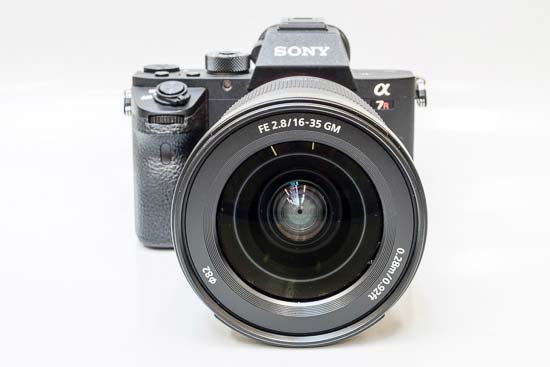 The Sony FE 16-35mm F2.8 GM lens mounted on a Sony A7R II
The Sony FE 16-35mm F2.8 GM lens mounted on a Sony A7R II
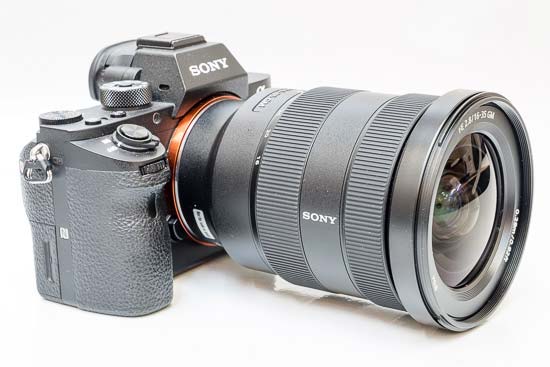 The Sony FE 16-35mm F2.8 GM lens mounted on a Sony A7R II, set at 35mm
The Sony FE 16-35mm F2.8 GM lens mounted on a Sony A7R II, set at 35mm
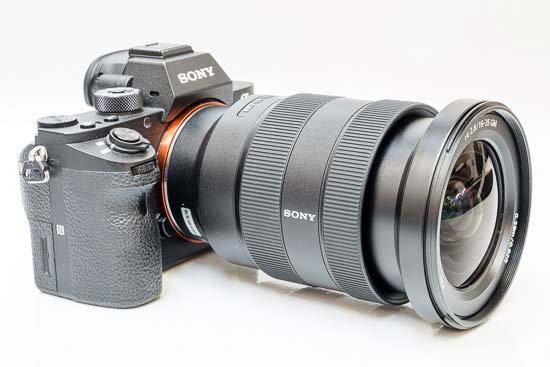 The Sony FE 16-35mm F2.8 GM lens mounted on a Sony A7R II, set at 16mm
The Sony FE 16-35mm F2.8 GM lens mounted on a Sony A7R II, set at 16mm
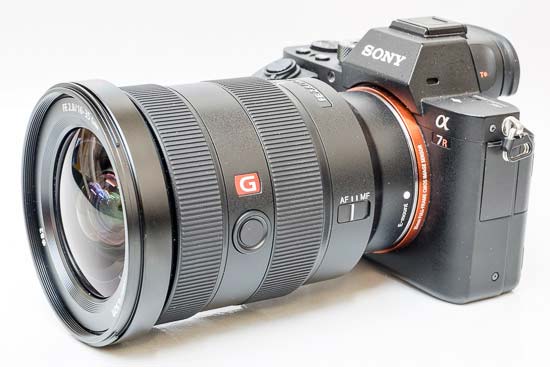 The Sony FE 16-35mm F2.8 GM lens mounted on a Sony A7R II, set at 35mm
The Sony FE 16-35mm F2.8 GM lens mounted on a Sony A7R II, set at 35mm
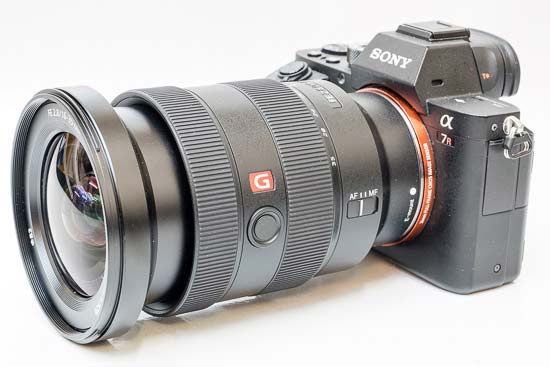 The Sony FE 16-35mm F2.8 GM lens mounted on a Sony A7R II, set at 16mm
The Sony FE 16-35mm F2.8 GM lens mounted on a Sony A7R II, set at 16mm
The Sony FE 16-35mm F2.8 GM has a sealed dust and moisture resistant design. It does not feature built-in Optical SteadyShot image stabilisation.
The wide and ridged zoom ring and the narrower manual focus ring are the main external controls of note. Manual focusing is possible via the textured focus ring when set on the specific camera body. The lens utilizes two DDSSMs (Direct Drive Super Sonic Wave Motors) to produce quiet and smooth focusing, making it well-suited to shooting both stills and video.
There is also a customisable focus hold button and a lens hood release button.
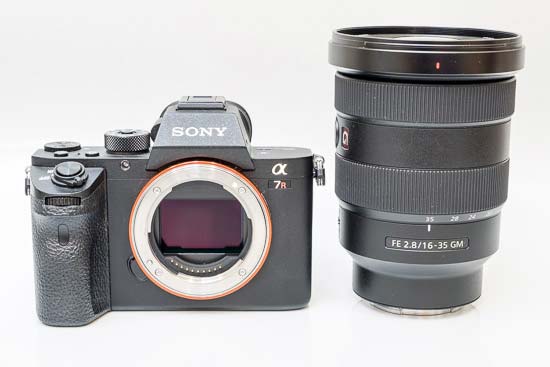 The Sony FE 16-35mm F2.8 GM lens alongside the Sony A7R II
The Sony FE 16-35mm F2.8 GM lens alongside the Sony A7R II
 Side of the Sony FE 16-35mm F2.8 GM lens
Side of the Sony FE 16-35mm F2.8 GM lens
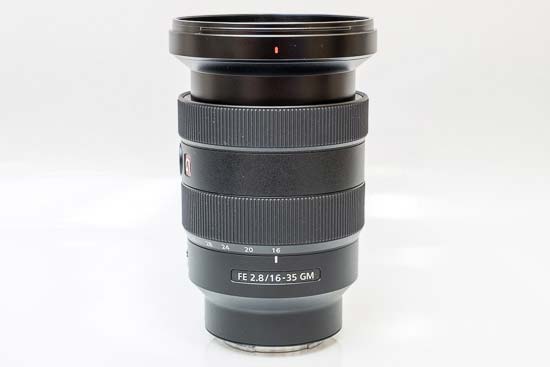 Side of the Sony FE 16-35mm F2.8 GM lens
Side of the Sony FE 16-35mm F2.8 GM lens
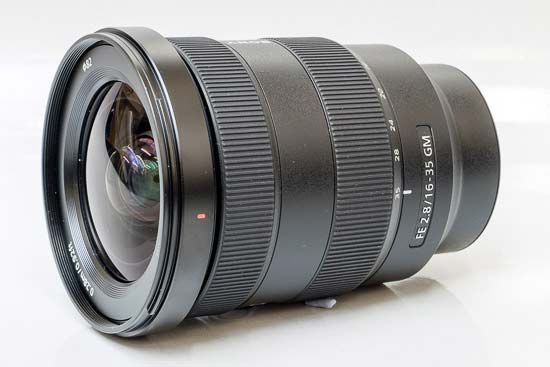 Side of the Sony FE 16-35mm F2.8 GM lens
Side of the Sony FE 16-35mm F2.8 GM lens
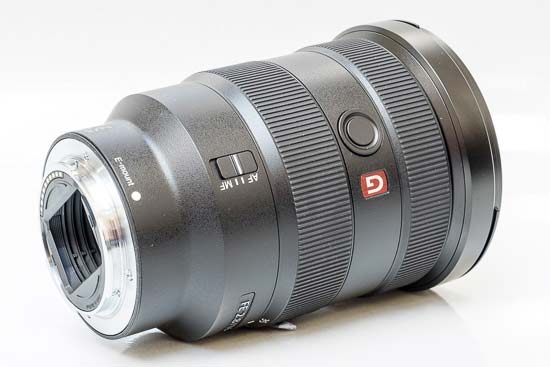 Side of the Sony FE 16-35mm F2.8 GM lens
Side of the Sony FE 16-35mm F2.8 GM lens
The Sony FE 16-35mm F2.8 GM lens has quite a wide focus ring. There are no hard stops at either end of the range, making it a little more difficult to set focus at infinity. Polariser users should be pleased that the 82mm filter thread doesn’t rotate on focus.
When it comes to auto-focusing, the Sony FE 16-35mm F2.8 GM zoom is a quiet and quick performer on the Sony A7R II that we tested it with, taking about 0.15 seconds to lock onto the subject.
We didn’t experience much «hunting», either in good or bad light, with the lens accurately focusing almost all of the time, and it’s also a quiet performer making it ideal for movie shooting.
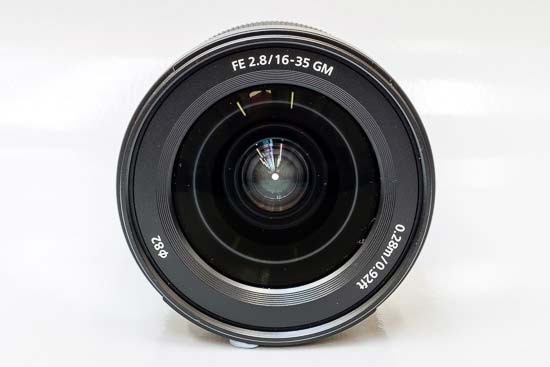 Front of the Sony FE 16-35mm F2.8 GM lens
Front of the Sony FE 16-35mm F2.8 GM lens
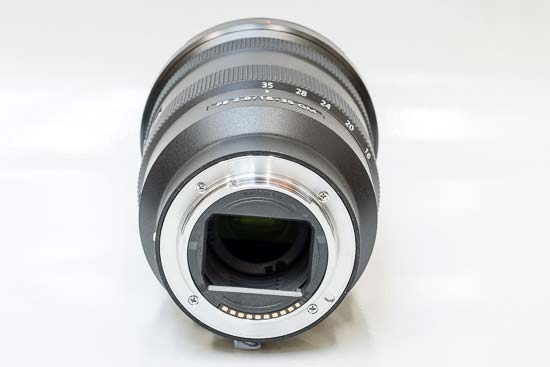 Rear of the Sony FE 16-35mm F2.8 GM lens
Rear of the Sony FE 16-35mm F2.8 GM lens
The Sony FE 16-35mm F2.8 GM lens has a metal lens mount. It accepts 82mm filters via plastic threads and is commendably supplied with both a soft case and a fairly good quality plastic petal-shaped lens hood.
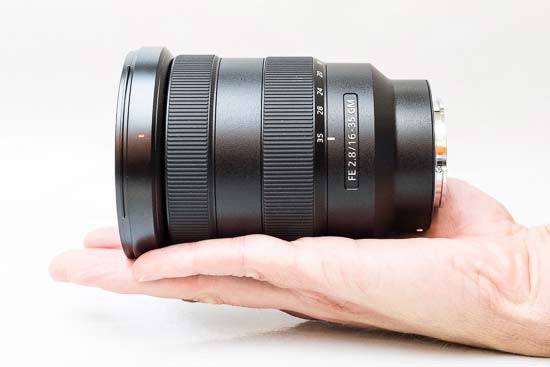 The Sony FE 16-35mm F2.8 GM lens in-hand
The Sony FE 16-35mm F2.8 GM lens in-hand
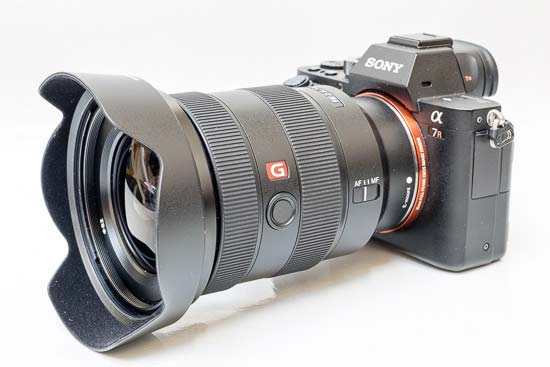 The Sony FE 16-35mm F2.8 GM lens with the ALC-SH149 lens hood fitted
The Sony FE 16-35mm F2.8 GM lens with the ALC-SH149 lens hood fitted
Focal Range
At the 16mm focal length the angle of view is 83 degrees.
 Field of view at 16mm
Field of view at 16mm
At the 35mm focal length the angle of view is 44 degrees.
 Field of view at 35mm
Field of view at 35mm
Chromatic Aberrations
Chromatic aberrations, typically seen as blue or purple fringes along contrasty edges, were almost completely absent from our test shots. The examples below show the worst-case scenario.
Light Fall-off and Distortion
With the Sony FE 16-35mm F2.8 GM lens set to its maximum aperture of f/2.8, there is some obvious light fall-off in the corners, requiring you to stop down by at least 3 f-stops to completely prevent it. There’s some barrel distortion evident at 16mm, and at 35mm there’s just a little pin-cushioning too.
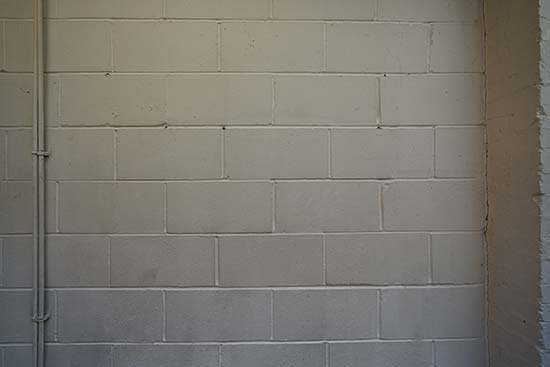 Light fall-off at 16mm
Light fall-off at 16mm
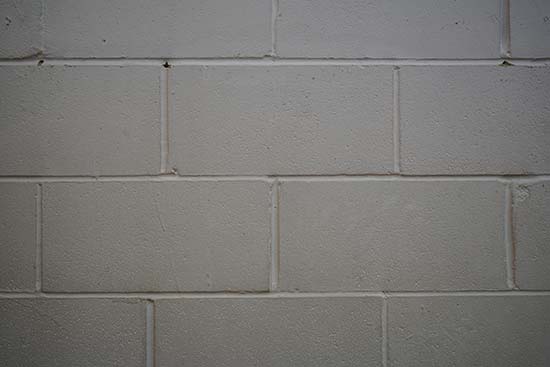 Light fall-off at 35mm
Light fall-off at 35mm
Macro
The Sony FE 16-35mm F2.8 GM isn’t claimed to be a macro lens, offering a minimum focusing distance of 28cm at 16mm, with a maximum magnification of 0.19x. The following example demonstrates how close you can get to your subject at 35mm.

Bokeh
Bokeh is a word used for the out-of-focus areas of a photograph, and is usually described in qualitative terms, such as smooth / creamy / harsh etc. In the FE 16-35mm F2.8 GM lens, Sony employed an iris diaphragm with 11 rounded aperture blades, which has resulted in very appealing bokeh in our view. We do realise, however, that bokeh evaluation is subjective, so we’ve included several 100% crops for your perusal.
Sharpness
In order to show you how sharp this lens is, we are providing 100% crops on the following pages.
- Ease of Use
- Sharpness: 16mm
-
24mm
-
35mm
- Sample Images
- Lens Specs
- Rating & Conclusion
- Main Rivals
- Review Roundup
- Ease of Use
- Sharpness: 16mm
-
24mm
-
35mm
- Sample Images
- Lens Specs
- Rating & Conclusion
- Main Rivals
- Review Roundup
